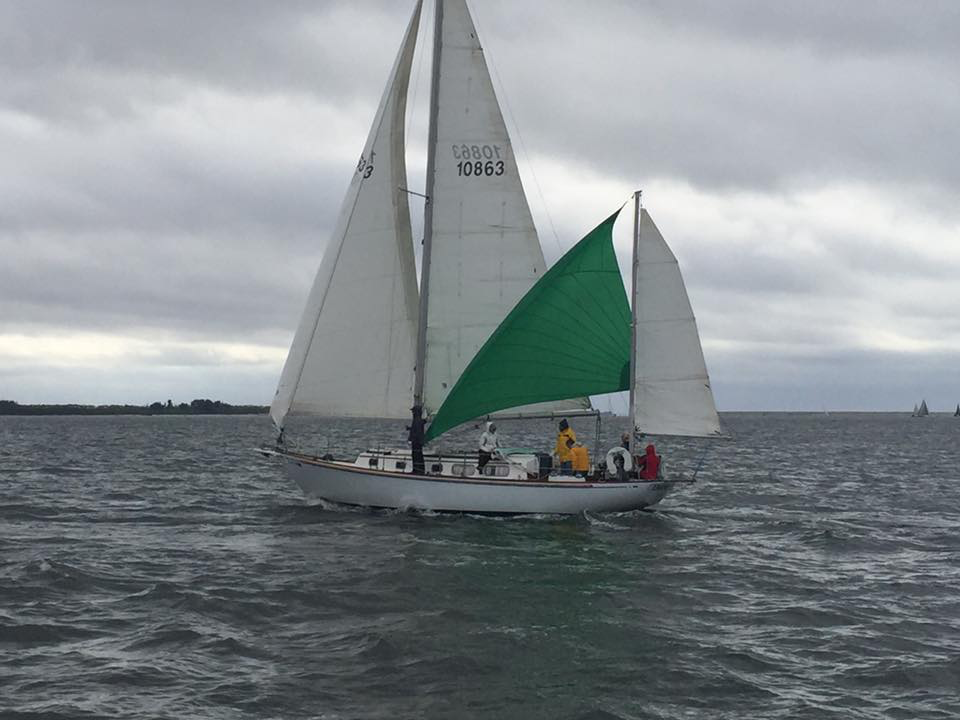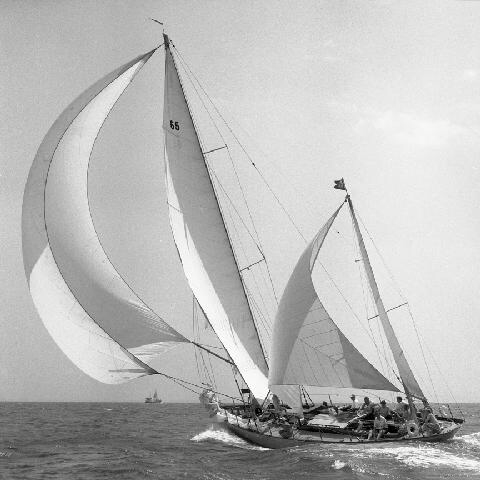While the rudder may be obscured by the seas, a yawl is still very distinguishable thanks to the fact that it has a normal sized rig and then a tiny little sail stuck on the back of the boat and hanging off the stern.
The mizzen in a Yawl actually provides no forward drive, but instead simply balances the sailplan. The mizzen sail is trimmed not for power but for balance. Easing the mizzen will make it less effective and produce less weather helm. Over trimming the mizzen will make it more effective and produce more weather helm. The sail should honestly be thought of more as an air rudder than a sail.
The Yawl was also favored for blue water cruising because reliable windsteering still wasn’t an easily purchasable commodity. Setting the mizzen on a particular wind angle would ensure that the boat would hold that course. If the boat veered from that course, the mizzen would then take the wind and push the stern back onto the correct course. This meant that a set wind angle could be held for long periods of time without any help from the crew or captain.
In racing circles, the Yawl was favored because the sail area of the mizzen mast was not counted. The mizzen sail was not counted because it produced no forward drive, but a staysail or spinnaker could be set on the mizzen as well and that sail could produce a lot of power off the wind. All of this sail area was not counted in the race rating for that particular yacht, so this was literally ”Free Sailarea” for these yachts.
As with any boat design that is race driven, as soon as the rules changed, so did everyone’s favor of these design characteristics. The yawl soon fell out of favor and quickly became a relic of the past, replaced by the next rule loophole.









